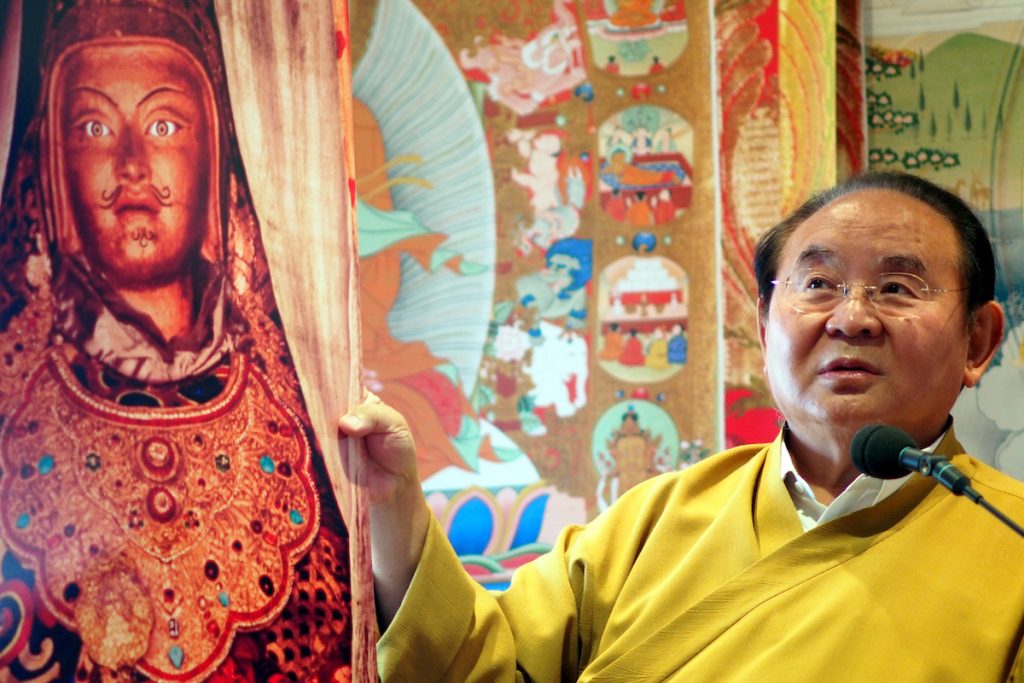In a July 14 detailed letter to Tibetan teacher Sogyal Rinpoche, eight of the famed lama’s longtime students accused their teacher of a decades-long pattern of sexual, physical, and psychological abuse. According to a July 21 press release issued by his community in response to the charges, Sogyal Rinpoche, the 70-year-old author of the bestselling Tibetan Book of Living and Dying and founder of Rigpa, an international network of practice centers, has made a decision “to step back and to enter a period of retreat and reflection.”
“We respect Sogyal Rinpoche’s decision to enter a period of retreat and reflection,” Ringpa said in a statement. “During this time Sogyal Rinpoche and Rigpa will seek professional and spiritual advice and look into whatever steps might be necessary. We have already initiated open discussion within our community about the letter and the issues it raises.”
The accusations are not new. They have been known for years not only to many of Sogyal Rinpoche’s students but also to ranking lamas in the Tibetan community. (One Tibetan lama has suggested that the students have violated their samaya vows.) Similar reports about Sogyal Rinpoche have appeared in the press, particularly with regard to the Lerab Ling practice center in France.
How does abuse in a community continue unchecked for so long? And what makes it possible in the first place?
In the fall of 2013 we made an attempt to address these questions in “Sex in the Sangha . . . Again.” In the introduction to the roundtable discussion on patterns of sexual abuse in Buddhist communities, features editor Andrew Cooper wrote:
Scandalous activities seem to thrive when individual communities isolate themselves—socially, ideologically, or in other ways—from the bonds of broader communities, both religious and secular. In such an atmosphere, assumptions tend to go unchallenged not because they are seen as valid but because they are not seen at all. They are just taken for granted. Scandals feed off isolation in another way too: when individuals within a community who try to raise questions about how things are done and what gets done are isolated—marginalized, discredited, even banned—the concerns they raise are readily dismissed. Sooner or later, this way of doing things proves detrimental to all concerned.
The roundtable included Lama Palden, founder of the Sukhasiddhi Foundation, who shed light on why, in her own tradition, abuse is so difficult to combat: “In the Tibetan Buddhist world,” she said back then, “even when the head of a lineage does hear about a problem and comes to talk to their lamas about it, they’re ignored. Because each center is like its own little kingdom.”
Jack Kornfield, cofounder of the Spirit Rock Meditation Center in Woodacre, California, pointed out that “[t]here have been a number of instances in the last 25 years where senior teachers in the Buddhist world, even the Dalai Lama, have spoken out against certain teachers, and it hasn’t made a lot of difference, because there haven’t been any consequences. Since the community where it is happening is usually isolated, that teacher is still seen as the great authority.”
As in the case of Rigpa, it usually takes a number of brave students who are willing, at the risk of alienating themselves from communities they have worked and lived in often for decades, to come forward publicly.
We’re making “Sex in the Sangha . . . Again” available with the hope that it will add some context to events that otherwise are so disheartening, particularly to those in communities most affected. The discussion is by no means complete, and issues as complex as this are dealt with fully only in open dialogue over time.
—The Editors
Thank you for subscribing to Tricycle! As a nonprofit, we depend on readers like you to keep Buddhist teachings and practices widely available.
